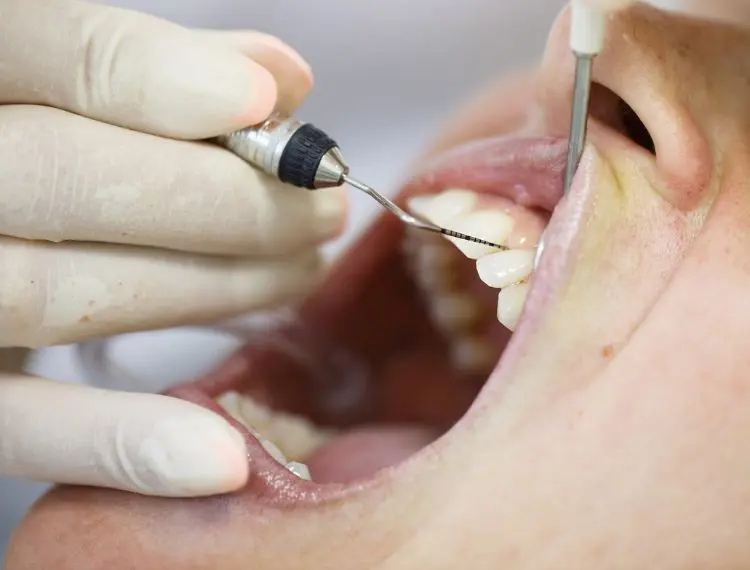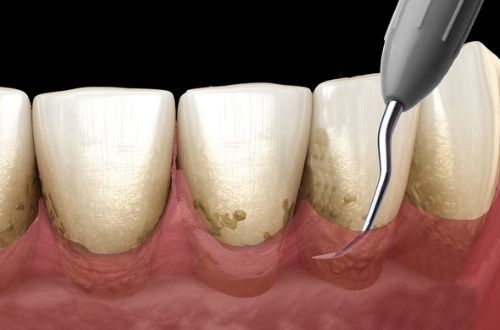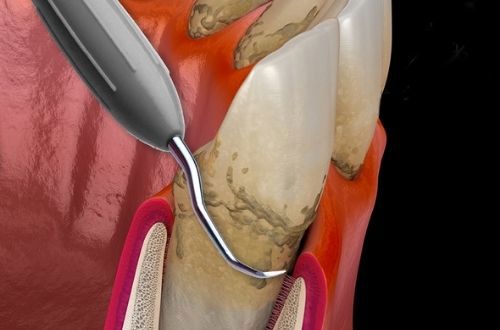
If you're told you have periodontal disease, your periodontist may propose a range of treatments. The latest guidelines on periodontal treatment suggest a stepwise approach to treatment. So, depending on your disease stage and grade your periodontist may increase “step up” or decrease “step down” your treatment until your gums are healthy.
First, a discussion about the causes of periodontitis, the goals of treatment and possible outcomes is held. The key to success is to understand dental plaque. This is the cause of the disease. It is also important to understand the factors that influence your body’s reaction to this plaque. These factors can include smoking, diabetes, and others. These factors need to be controlled.
What is dental plaque?
Plaque is a sticky layer of bacteria that forms on the surface of the teeth, both above and below the gums. It can make the teeth ‘feel fuzzy’ when they have not been brushed. When plaque builds up on the teeth, it can lead to gum disease.
Non-surgical periodontal treatment
STEP 1 of periodontal treatment is to establish a good daily oral hygiene routine. Your periodontist will help you to fine tune your cleaning to ensure all plaque is removed from all tooth surfaces every day. They will provide pro-tips on the best ways to do this and the best tools to use for your mouth. Performing good oral hygiene every day is essential to ensure the disease is controlled and even prevented. In addition, other factors such as diabetes and smoking will be addressed.
STEP 2 includes thorough cleaning of the teeth by your periodontist. This is called a deep cleaning or debridement. All plaque and tartar are removed from the teeth, often over several appointments using local anaesthetic to make the teeth and gums numb.
The first two STEPS are known as non-surgical periodontal treatment and can be delivered together (Figures A, B and C). In some specific cases, antibiotics can also be given with this treatment. After these treatment steps, the gums are given time to heal.

Figure A. Non-surgical treatment of gum-disease using hand instruments.

Figure B. Non-surgical treatment of gum-disease using hand instruments.

Figure C. Non-surgical treatment of gum-disease using ultrasonic machine.
Review and Maintenance
After having time to heal, your periodontist will check the health of the gums. This is called reassessment. If the treatment has been successful, a maintenance program begins. This is known as supportive periodontal care, which is STEP 4.
STEP 4 is essential to ensure the gums remain healthy and disease does not return. If disease returns, further destruction of the gums and bone can occur.
In around 40% of cases no further treatment is needed. But in some cases, bleeding gums and deep pockets might continue to be present. If so, further treatment is needed. This is STEP 3.
In STEP 3, step 1 & 2 can often be repeated. Or surgical periodontal treatment may be recommended. Common reasons for surgery include:
- To improve access to cleaning in difficult areas, such as the surfaces of the tooth roots.
- To make cleaning easier (pocket depth reduction).
- To reverse the damage (regenerative procedures).
- Graft tissue into areas where disease has caused the gum and bone tissues to be lost.
Again, the gums need to be reviewed to see the results of treatment. When goals are achieved, you enter STEP 4, known as the maintenance or supportive phase.
The long-term success of treatment for periodontal disease is a partnership. It relies on your own efforts at home with optimal cleaning and those of the dental team who provide your ongoing checks and regular care.

This content was created in collaboration with the Australian & New Zealand Academy of Periodontitists (ANZAP).


